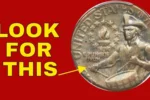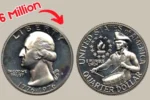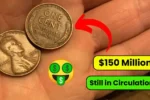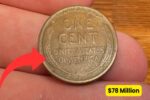The $95 Million Rare Bicentennial Quarter Coins Change Your Life
One of the most talked-about tales in recent numismatic circles is that of the so-called “$95 million Bicentennial quarter.” This incredible claim straddles the line between historical fact, coin collecting fascination, and the age-old allure of hidden riches just waiting to be discovered.
The Bicentennial Quarter: Historical Background
In 1976, the United States celebrated its 200th anniversary, marking two centuries of independence. To commemorate this historic event, the U.S. Mint released unique versions of the quarter, half dollar, and dollar coins.
The Bicentennial quarter, redesigned for the occasion, featured a Colonial drummer on the reverse, replacing the standard eagle motif. This patriotic image, created by artist Jack L. Ahr, was minted in both 1975 and 1976, all stamped with the dual date “1776–1976.”
Although over 1.7 billion Bicentennial quarters were minted and distributed across the country, making them common overall, a few rare variations and production errors have caught the attention of serious collectors—sometimes fetching surprising prices.
What Makes a Bicentennial Quarter Valuable?
Most Bicentennial quarters are worth only face value, but certain variants and minting mistakes can command much higher sums. These are some of the more sought-after types:
Double Die Varieties
Some Bicentennial quarters exhibit double die errors, where parts of the design—such as the lettering or numbers—appear slightly offset or duplicated due to misalignment during the striking process.
Depending on the severity of the doubling and the condition of the coin, such errors can sell for several hundred dollars among knowledgeable collectors.
Silver Clad Editions
The U.S. Mint also produced a limited run of 40% silver Bicentennial quarters, primarily for collector sets. Approximately 11 million of these were made, and they were never intended for general circulation.
These coins, especially when still in their original packaging or in uncirculated condition, can fetch anywhere from $20 to $50, depending on the market.
Proof Set Coins
Proof versions of the Bicentennial quarter, made using special dies and minting techniques to produce mirror-like surfaces, were also sold to collectors. Flawless examples—especially those graded at the highest levels—can be valued at a few hundred dollars or more.
The $95 Million Quarter: Separating Fact from Fiction
Despite what countless online headlines and social media posts suggest, no Bicentennial quarter has ever sold for $95 million, or anything even remotely close to that figure.
This figure is a gross exaggeration likely fueled by clickbait articles and viral misinformation. While it’s true that some rare coins have broken auction records, none of those were Bicentennial quarters—and even the most prized coins in history have only reached a few million dollars at most.
Why the Myth Persists: The Psychology of Coin Collecting Myths
The story of a nearly priceless quarter resonates with people for several powerful reasons:
- Hidden Treasure Appeal: The idea that you could unknowingly own something incredibly valuable sparks curiosity and hope.
- Financial Wishful Thinking: In tough economic times, stories of sudden wealth—even from coins—offer an enticing escape.
- Nostalgia and Patriotism: For many Americans, Bicentennial coins recall a unifying moment in U.S. history, giving them added sentimental value.
- Repetition Breeds Belief: Even an inaccurate story can start to feel true after it circulates widely across multiple platforms.
True Value of Bicentennial Quarters
While none are worth millions, Bicentennial quarters still carry genuine value, both in monetary and cultural terms.
Historical Symbolism
These coins commemorate one of the most significant anniversaries in U.S. history. Holding one is like having a tiny, tangible reminder of the country’s founding and the celebratory spirit of 1976.
Educational Importance
Bicentennial quarters can help people—especially younger generations—learn about American history, coin production, and the art of numismatics.
Modest Appreciation Potential
Coins with minting errors, proof-like finishes, or those preserved in their original mint packaging may slowly gain value over time, especially among collectors assembling complete sets.
Cultural Relevance
Bicentennial quarters also reflect the design style and patriotic mood of the 1970s. As such, they offer insight into the cultural and artistic priorities of the era.
How to Evaluate Your Bicentennial Quarter
If you’re sorting through change or inherited a collection, here’s how to determine if a Bicentennial quarter is worth more than face value:
Assessing Condition
Coins are graded on a scale from P-1 (Poor) to MS-70 (Mint State Perfect). Higher grades, especially those with full detail and luster, are more desirable and valuable.
Identifying Errors
Check for doubling (especially in “LIBERTY” and “IN GOD WE TRUST”), off-center strikes, or unusual textures. Use a jeweler’s loupe or magnifying glass for closer inspection.
Verifying Silver Content
Silver quarters sound different when tapped and lack the brownish copper stripe visible on the edge of regular clad coins. Silver Bicentennial quarters also weigh slightly more.
Get It Professionally Graded
For coins that appear particularly pristine or unusual, consider submitting them to grading services like PCGS or NGC. Professional authentication helps determine true market value and builds buyer trust if you ever sell.
Understanding the Coin Market
The value of coins, including Bicentennial quarters, depends on several important market factors:
Abundance vs. Rarity
With over a billion Bicentennial quarters in existence, most are not rare. Only coins with significant errors or exceptional condition stand out in the marketplace.
Authentication Matters
As interest in collectible coins grows, so does the risk of counterfeit pieces. Certified coins carry more weight with buyers and tend to hold or increase in value over time.
Collector Trends
Current trends in the numismatic world lean heavily toward error coins and unusual varieties, which means those types of Bicentennial quarters attract more attention.
Market Fluctuations
Coin collecting experiences cycles of popularity, which can influence demand and pricing. Certain anniversaries or events can temporarily boost interest in specific coin types.
How the Digital Age Has Changed Coin Collecting
Technology has revolutionized the numismatic hobby in recent years:
- Online Auctions & Marketplaces: Sites like eBay and Heritage Auctions have made rare coins more accessible and transparent.
- Educational Resources: Online grading tools, coin databases, and digital references help even beginners become informed collectors.
- Collector Communities: Social media and forums allow collectors to share finds, ask questions, and debunk myths—like the infamous $95 million quarter.
- High-Quality Images: Sharp digital photography has made it easier than ever to verify a coin’s condition and authenticity before purchase.
More Than Just a Coin
Although the story of a $95 million Bicentennial quarter is pure fantasy, the appeal of coin collecting goes well beyond dreams of instant wealth.
Searching for rare coins sharpens attention to detail, encourages research, and connects people with American history in a tactile, engaging way. There’s value in that—even if it’s not the kind that shows up in your bank account.
So, next time a Bicentennial quarter lands in your palm, take a second to appreciate the history it holds—and the modern myths it’s inspired.
Even if it won’t make you rich, it’s a small piece of the American story that costs just twenty-five cents—but is worth far more in meaning.











